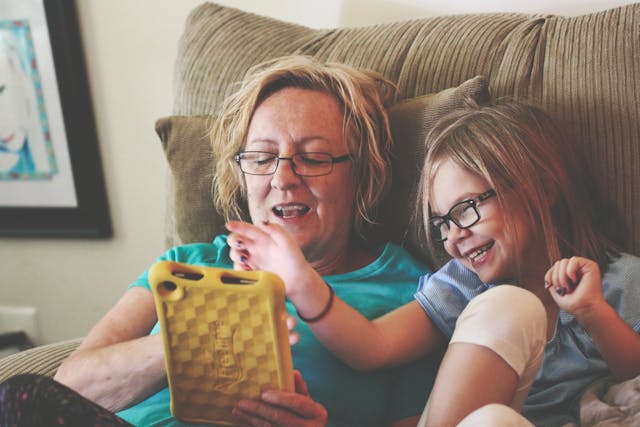Parenting in the Digital Age: Balancing Screen Time and Family Time
Technology has become an integral part of modern life, making it nearly impossible to raise children without screens. While digital devices offer educational opportunities and entertainment, excessive screen time can impact a child's development, social skills, and overall well-being. As a parent, finding the right balance between screen time and family time is crucial for fostering healthy habits and strong relationships.

The Impact of Screen Time on Children
Before setting limits, it’s important to understand the effects of screen time on children. Some potential benefits and drawbacks include:
Benefits:
-
Educational Value – High-quality apps and programs can enhance learning, critical thinking, and creativity.
-
Connectivity – Social media and video calls help kids stay connected with friends and family.
-
Entertainment & Relaxation – Engaging games, shows, and music can be enjoyable and provide downtime.
Challenges:
-
Delayed Social Skills – Too much screen time can replace real-world interactions, impacting communication and empathy.
-
Sleep Disruptions – The blue light from screens can interfere with melatonin production, leading to sleep difficulties.
-
Increased Risk of Addiction – Children may become dependent on screens for entertainment, making it harder to enjoy offline activities.
Setting Healthy Screen Time Limits
While technology is unavoidable, parents can establish guidelines to ensure kids use screens mindfully.
1. Set Age-Appropriate Limits
The American Academy of Pediatrics (AAP) provides the following recommendations:
-
Under 18 months – Avoid screen time except for video chatting.
-
18–24 months – Introduce high-quality content with parental supervision.
-
2–5 years – Limit screen use to one hour per day of educational programming.
-
6+ years – Set consistent limits to ensure screen time does not replace sleep, physical activity, and social interaction.
2. Create Screen-Free Zones
Establish screen-free areas, such as the dining table and bedrooms, to encourage face-to-face interaction. This helps reinforce family bonding and ensures that screen time does not interfere with meals, sleep, or conversations.
3. Encourage Active Screen Use
Not all screen time is equal. Encourage children to engage with interactive, educational content rather than passive consumption. For example:
-
Use apps that promote problem-solving and creativity.
-
Watch family-friendly documentaries together and discuss them afterward.
-
Encourage kids to use video calls to connect with loved ones rather than scrolling through social media.
Prioritizing Family Time Over Screen Time
A healthy balance between screens and real-life experiences strengthens family connections. Here’s how you can create more quality time together:
1. Establish Tech-Free Family Activities
Plan engaging, non-digital activities to encourage more face-to-face interaction:
-
Game Nights – Play board games or card games as a family.
-
Outdoor Adventures – Go for a walk, bike ride, or explore nature together.
-
Cooking Together – Involve kids in preparing meals, making cooking a fun and interactive experience.
2. Lead by Example
Children often model their behavior after their parents. If they see you constantly on your phone or computer, they will likely do the same. Set an example by reducing your own screen time during family interactions.

3. Use Technology Together
Rather than eliminating screens entirely, find ways to use them as a family:
-
Watch movies together and discuss their themes.
-
Play video games that encourage teamwork and critical thinking.
-
Work on creative digital projects, like making videos or photo collages.
Teaching Digital Responsibility
Beyond setting limits, it’s essential to teach kids how to use technology responsibly.
1. Talk About Online Safety
Teach your children about the potential dangers of the internet, such as cyberbullying, inappropriate content, and online predators. Encourage open discussions and establish rules for safe internet use.
2. Promote Digital Well-Being
Help kids recognize when they need a break from screens. Encourage them to take regular pauses, practice mindfulness, and engage in offline hobbies.
3. Encourage Face-to-Face Communication
Teach children the importance of in-person communication. Encourage them to make eye contact, listen actively, and engage in meaningful conversations.
Finding the Right Balance
Balancing screen time and family time doesn’t mean eliminating technology altogether—it’s about using it intentionally and ensuring it doesn’t replace valuable real-world experiences. By setting clear boundaries, prioritizing quality family time, and fostering digital responsibility, parents can create a balanced environment where technology enhances, rather than hinders, a child's development.












